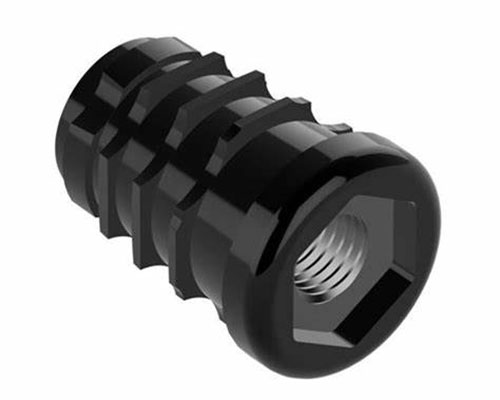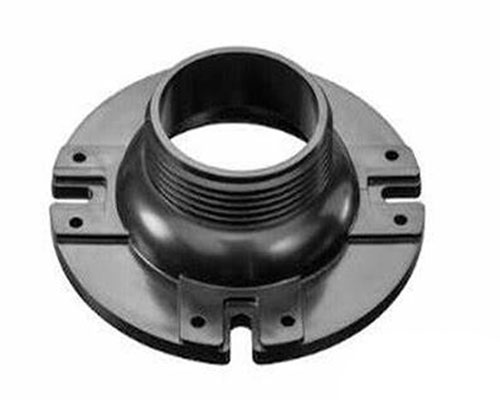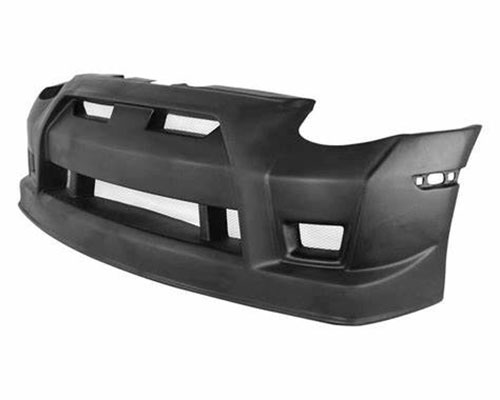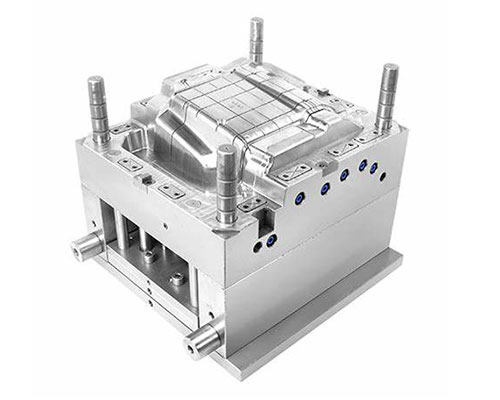Prototyping and Manufacturing Application in Construction parts Industries
Transform Construction with Rapid Prototyping & Mass Production. Revolutionize your construction workflows with Yigu Technology cutting-edge solutions. Our rapid prototyping and mass manufacturing services deliver unmatched precision and scalability.
Key Benefits:
✔ ✅Faster Time-to-Market – Accelerate project timelines with rapid iterative design.
✔ ✅Cost-Effective Scaling – Seamlessly transition from prototypes to bulk production.
✔ ✅Material Innovation – High-strength, lightweight materials tailored for construction.
✔ ✅Customized Solutions – Adapt designs to meet unique architectural demands.
✔ ✅Sustainable Practices – Reduce waste with optimized manufacturing processes.
Upgrade your construction efficiency—partner with Yigu Technology today!
Introduction
In the construction industry, the integration of rapid prototyping (RP) and mass manufacturing techniques has revolutionized the way projects are conceptualized, designed, and executed. Rapid prototyping, which encompasses technologies like 3D printing, stereolithography (SLA), and selective laser sintering (SLS), allows for the creation of detailed and precise models in a fraction of the time compared to traditional methods. Mass manufacturing, on the other hand, focuses on the efficient production of large quantities of construction parts, leveraging techniques such as injection molding and die casting. This article explores how these advanced manufacturing techniques are being applied in the construction industry, enhancing efficiency, reducing costs, and driving innovation.
Case Studies of Construction Parts
1.1 3D Printed Architectural Models
One of the most significant applications of rapid prototyping in the construction industry is the creation of 3D printed architectural models. Companies like Yigu Technology have been at the forefront of this innovation. By utilizing digital modeling and STL file formats, architects can design intricate models that are then printed using photopolymer materials. These models provide a tangible representation of the design, allowing stakeholders to visualize the project in detail. For instance, a recent project involved creating a 3D printed model of a high-rise building, which helped in identifying design flaws and making necessary adjustments before actual construction began. This not only saved time but also reduced costs associated with design changes during the construction phase.
1.2 Rapid Tooling for Customized Construction Parts
Rapid tooling is another area where the combination of rapid prototyping and mass manufacturing has shown remarkable benefits. Yigu Technology has developed a process that uses RP techniques to create molds for injection molding and die casting. This approach significantly reduces the lead time for producing customized construction parts. For example, in a project involving the production of custom-designed window frames, rapid tooling allowed the company to create molds in just a few days, compared to the weeks it would typically take using traditional methods. The molds were then used for high-volume production, ensuring consistency and quality while meeting the specific requirements of the project.
1.3 Contour Crafting for Mega-scale Construction
Contour crafting represents a groundbreaking application of rapid prototyping in large-scale construction. This technology uses layer manufacturing techniques to build entire structures, such as houses and commercial buildings, in a matter of days. Yigu Technology has been experimenting with contour crafting to create sustainable and efficient construction solutions. By integrating CAD model construction and digital fabrication, the company can design and print complex geometric structures with high precision. A notable case study involved the construction of a prototype house using contour crafting. The process demonstrated significant time and cost savings, while also showcasing the potential for reducing waste and environmental impact.
Advantages of Rapid Prototyping and Mass Manufacturing in Construction
2.1 Enhanced Design Flexibility
The integration of RP and mass manufacturing techniques offers unparalleled design flexibility in the construction industry. With digital modeling tools and additive manufacturing processes, designers can create complex geometries and intricate details that would be impossible with traditional methods. This flexibility allows for more innovative and aesthetically pleasing designs, meeting the diverse needs of modern construction projects. For example, Yigu Technology has used RP to create custom-designed decorative elements for a luxury hotel, adding unique visual appeal to the project.
2.2 Improved Production Efficiency
Mass manufacturing techniques such as injection molding and die casting, when combined with rapid prototyping, significantly enhance production efficiency. Rapid prototyping allows for quick iterations and design validation, ensuring that the final product meets all specifications before mass production begins. This reduces the risk of errors and rework, leading to faster project completion times. Yigu Technology has observed a substantial increase in production efficiency by using RP to create molds for mass manufacturing construction parts. The ability to quickly produce high-quality parts in large quantities has been a game-changer for the company.
2.3 Cost Reduction
One of the most compelling benefits of integrating RP and mass manufacturing in the construction industry is cost reduction. Rapid prototyping reduces the time and resources required for design and development, while mass manufacturing techniques ensure economies of scale. By using RP to create molds and tooling for mass production, companies like Yigu Technology can produce large quantities of construction parts at a lower cost per unit. This cost reduction is particularly significant for projects requiring customized parts, where traditional manufacturing methods would be prohibitively expensive.
Challenges and Considerations
3.1 Material Selection and Compatibility
While rapid prototyping and mass manufacturing offer numerous advantages, material selection and compatibility remain critical challenges. Construction parts must meet specific strength, durability, and safety requirements. Yigu Technology invests significant resources in material science research to ensure that the materials used in RP and mass manufacturing are suitable for construction applications. This involves testing and optimizing materials such as photopolymers, metal alloys, and ABS for their mechanical properties and compatibility with various manufacturing processes.
3.2 Process Capability and Quality Control
Ensuring consistent quality in rapid prototyping and mass manufacturing processes is essential for the construction industry. Yigu Technology employs rigorous quality control measures to monitor and maintain process capability. This includes regular calibration of equipment, material testing, and inspection of finished parts. By maintaining high standards of quality control, the company ensures that construction parts meet the required specifications and perform reliably in real-world applications.
3.3 Integration with Existing Construction Practices
Integrating RP and mass manufacturing techniques into existing construction practices can be challenging. Yigu Technology works closely with construction teams to ensure seamless integration. This involves training personnel on new technologies, developing standardized workflows, and ensuring that RP and mass manufacturing processes align with traditional construction timelines and requirements. By fostering collaboration and communication, the company helps bridge the gap between advanced manufacturing and traditional construction practices.
Future Outlook
4.1 Advancements in Technology
The future of rapid prototyping and mass manufacturing in the construction industry looks promising. Advances in technology, such as the development of new materials and more efficient printing processes, will further enhance the capabilities of RP and mass manufacturing. Yigu Technology is actively involved in researching and adopting these advancements to stay at the forefront of innovation. For example, the company is exploring the use of new photopolymer materials that offer improved strength and durability, making them suitable for more demanding construction applications.
4.2 Industry 4.0 and Digital Transformation
The construction industry is increasingly embracing Industry 4.0 and digital transformation. Yigu Technology is leveraging digital tools and automation to optimize RP and mass manufacturing processes. This includes integrating Building Information Modeling (BIM) with RP technologies to create a seamless workflow from design to production. By adopting these digital solutions, the company aims to improve efficiency, reduce waste, and enhance overall project outcomes.
4.3 Sustainability and Environmental Impact
As the world becomes more environmentally conscious, the construction industry is under increasing pressure to adopt sustainable practices. Rapid prototyping and mass manufacturing techniques offer opportunities to reduce waste and environmental impact. Yigu Technology is committed to developing sustainable manufacturing processes, such as using recycled materials and optimizing production to minimize waste. By focusing on sustainability, the company aims to contribute to a greener future for the construction industry.
Conclusion
The application of rapid prototyping and mass manufacturing techniques in the construction industry has transformed the way projects are designed and executed. Yigu Technology, as a leader in this field, has demonstrated the significant benefits of these technologies through various case studies and applications. From creating detailed 3D printed architectural models to producing customized construction parts using rapid tooling, these techniques offer enhanced design flexibility, improved production efficiency, and cost reduction. While challenges such as material selection and process capability remain, the future outlook for RP and mass manufacturing in construction is bright. As technology continues to advance and the industry embraces digital transformation and sustainability, Yigu Technology is well-positioned to drive innovation and shape the future of construction.



